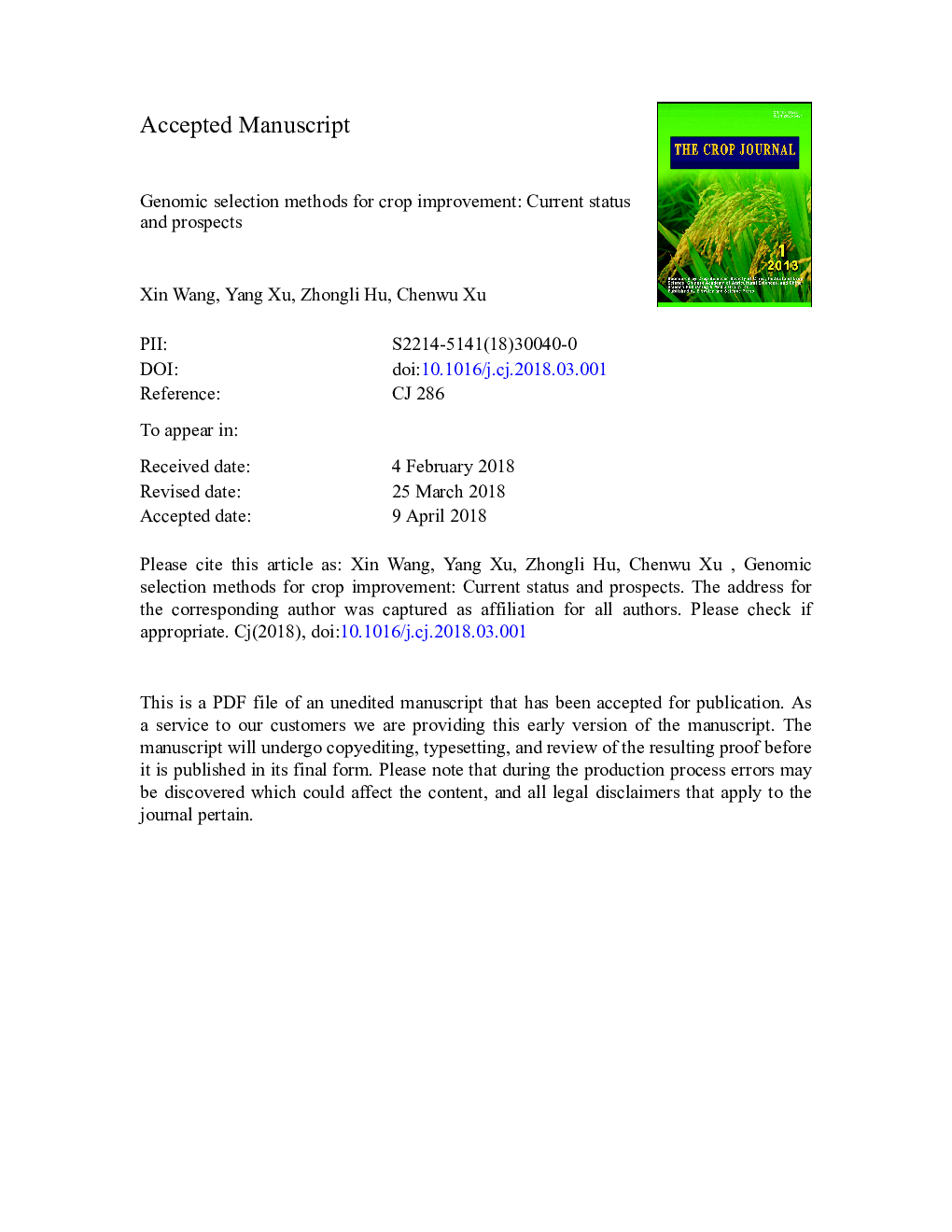| Article ID | Journal | Published Year | Pages | File Type |
|---|---|---|---|---|
| 8408658 | The Crop Journal | 2018 | 22 Pages |
Abstract
With marker and phenotype information from observed populations, genomic selection (GS) can be used to establish associations between markers and phenotypes. It aims to use genome-wide markers to estimate the effects of all loci and thereby predict the genetic values of untested populations, so as to achieve more comprehensive and reliable selection and to accelerate genetic progress in crop breeding. GS models usually face the problem that the number of markers is much higher than the number of phenotypic observations. To overcome this issue and improve prediction accuracy, many models and algorithms, including GBLUP, Bayes, and machine learning have been employed for GS. As hot issues in GS research, the estimation of non-additive genetic effects and the combined analysis of multiple traits or multiple environments are also important for improving the accuracy of prediction. In recent years, crop breeding has taken advantage of the development of GS. The principles and characteristics of current popular GS methods and research progress in these methods for crop improvement are reviewed in this paper.
Related Topics
Life Sciences
Agricultural and Biological Sciences
Agronomy and Crop Science
Authors
Xin Wang, Yang Xu, Zhongli Hu, Chenwu Xu,
